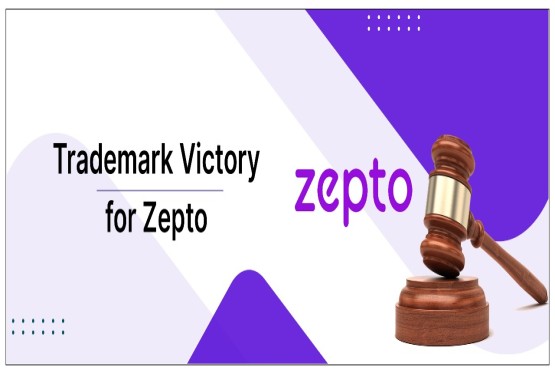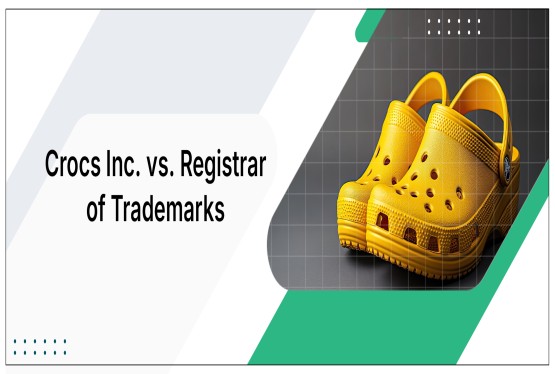In India, a trademark application is a legal document that is filed with the Indian Trade Marks Registry office to register a trademark governed by Trademark Act, 1999. Protecting a brand name is important for legal protection, competitive advantage, business valuation, building trust, and protection from infringement.
In today’s era of online business, it is important to protect the brand name and business from any misrepresentation or infringement in future leading to litigation. Trademark builds the Company’s reputation and trust of customers for the brand. Hence, one must file for a Trademark application under Trademark Act,1999.
Trademark Application
Once decided to go for filing a trademark application in India, the applicant must conduct Trademark search and choose the appropriate trademark class in advance before making the application and check where the trademark to be used is unique and distinctive and then provide information about the trademark they wish to register, such as a description of the goods or services it will be used with, and a representation of the trademark itself, which could be a word, logo, phrase, symbol, design or combination of any.
The Trademark application will then be reviewed by a trademark examiner to ensure that it meets all legal requirements and does not conflict with existing trademarks. If the application is approved after Trademark examination, the trademark will be published in the Trademark Journal Publication, and any interested party will have 3 months to file an opposition. If the trademark is not opposed or the opposition is unsuccessful, the trademark will be registered and a Trademark registration certificate is issued.
In case, a Trademark objection is raised by any opponent party, the applicant is given a chance to justify the grounds of objection with reasons and meet all the requirements for registration to be successfully registered. Trademark hearing is done before the Registrar physically or via video conferencing and as deemed fit by the Registrar authority the final decision is taken.
Once registered, the trademark holder has exclusive rights to use the trademark in connection with the goods or services specified in the registration. It is important to monitor and enforce the trademark to ensure that it is not being used without permission and renew the registration on a regular basis.

Period of validity:
Trademark registration is valid for a period of 10 years and can be renewed again for another 10 years tenure under the provision of the Act. It is recommended to hire a trademark attorney to help you with the process and make sure that everything is done correctly.
Ways to protect the brand name:
Get Trademark registration – one must ensure the trademark is registered, giving the owner its exclusive right to use the product and distinguish it from competitor’s product. A registered trademark can protect the business from infringement, which is the unauthorized use of a trademark by a third party. This can save a business from costly legal battles and reputational damage. Enforce your trademark rights to prevent others from using it without permission.
Building strong presence – once the brand name is registered it develops and maintains a strong reputation for the products or services associated with the trademark. The competitors or random people would not choose to sell their product or provide services under a brand name which has its trademark in place. For example, no one would be selling pizza under the name of Dominos trademark or selling shoes under the name of Nike trademark. Building and securing brand online presence by using only one domain for business, (such as .com, .net, .org and other versions of domain names) is advisable. A good brand should spare no expense in sheltering their brand against any potential infringement. One must Consider investing in advertising campaigns to increase brand awareness.
Non-Disclosure agreements (NDA) – NDAs are commonly used in business and commerce to protect sensitive information such as trade secrets, business practices, proprietary technology, financial data, and other confidential information from being disclosed to unauthorized parties. NDAs are used to prevent the unauthorized use of intellectual property. Hence, it is essential to have a legally binding non-disclosure agreement with freelancers, contractors, employees in order to secure and guard the brand.
NDAs typically include the below provisions:
Definition of Confidential Information: This section defines what information is considered confidential and protected under the NDA.
Obligations of the Receiving Party: This section outlines the obligations of the party or parties who are receiving the confidential information, such as not disclosing the information to others and taking reasonable measures to protect the information.
Exclusions: This section outlines any information that is excluded from the definition of confidential information and is not protected under the NDA.
Duration: This section outlines the length of time that the NDA will be in effect.
Remedies: This section outlines the remedies that will be available to the disclosing party if the receiving party breaches the NDA.
Governing Law: This section outlines the jurisdiction and laws that will govern the NDA
NDAs can be unilateral, bilateral, or multilateral, depending on the number of parties involved and the type of confidential information being protected.
It's important to note that NDAs are legally binding documents, and a breach of the agreement can result in serious legal and financial consequences. It is recommended to seek legal advice before signing an NDA.
Monitor competition – the brand should regularly search and monitor for instances of trademark infringement. Having a regular check in the online market to know if there is any sign of unethical practice. One can also set up Google Alerts for specific terms or phrases related to competitors' brands. Additionally, keeping an eye on competitors' advertising and marketing materials, as well as monitoring their social media accounts, can give an insight into any new branding or trademark efforts they may be undertaking. It's also important to keep track of any legal disputes or oppositions to trademarks filed by your competitors.
Formulate confrontation against infringement – Once discovered that the brand name is being illegally used by any third party, the owner shall send a cease-and-desist letter to the infringing party, outlining the infringement and requesting that they stop using the trademark. Followed by filing a complaint with the appropriate government agency (IP office). If the infringing party continues to use the trademark, one must file a lawsuit to enforce the rights.
Note: Seek for injunctive relief, which is a court order that prohibits the infringing party from continuing the infringing activity; or seek damages or profits made by the infringing party as a result of the infringement.
It's important to keep in mind that the process and requirements for fighting infringement may vary depending on your location and the specific laws of your country. It's always recommended to consult with a trademark attorney for specific guidance.
Some Benefits of Trademark application:
Legal protection: A registered trademark gives the holder exclusive legal rights to use the trademark in connection with the goods or services specified in the registration. This means that others cannot use a similar name or logo without the trademark holder's permission.
Competitive advantage: A strong brand name can help a company stand out in the marketplace and attract customers. By protecting a brand name, a company can ensure that its reputation and goodwill are not damaged by others using a similar name or logo.
Valuation of the business: A strong brand name can increase the value of a company, making it more attractive to investors and potential buyers.
Building Trust: A registered trademark can help build trust among customers. Customers are more likely to trust and choose a brand they recognize and whose reputation has been built over time.
Protection from Infringement: A registered trademark can protect the business from infringement, which is the unauthorized use of a trademark by a third party. This can save a business from costly legal battles and reputational damage.
Final Thoughts
Now, here comes the main question: should you apply for the Trademark or not? Trademarking your brand name is always a good decision if you are worried about people using it unfairly, without your permission. It also helps when you are planning to expand your business in different states. If you are worried about how to protect your brand name, feel free to contact us at info@ccoffice.in or 9988424211.






























_(b)_of_the_Trademark_Act,_1999_(1)_crop10_thumb.jpg)


_crop10_thumb.jpg)




























_crop10_thumb.jpg)
_crop10_thumb.jpg)






_crop10_thumb.jpg)








_crop10_thumb.jpg)



_crop10_thumb.jpg)





























_crop10_thumb.jpg)

















_crop10_thumb.jpg)






_crop10_thumb.jpg)












































































































































_crop10_thumb.jpg)




































_crop10_thumb.jpg)












_crop10_thumb.jpg)































